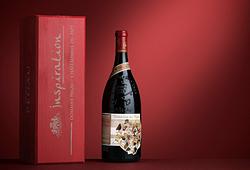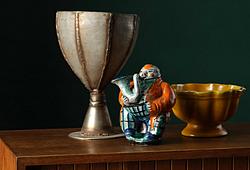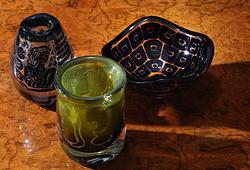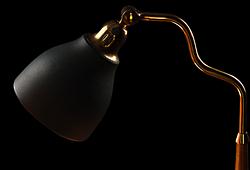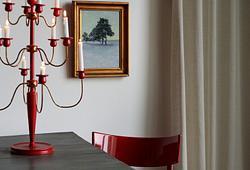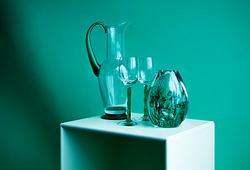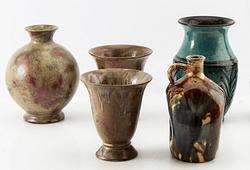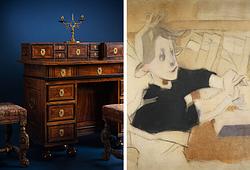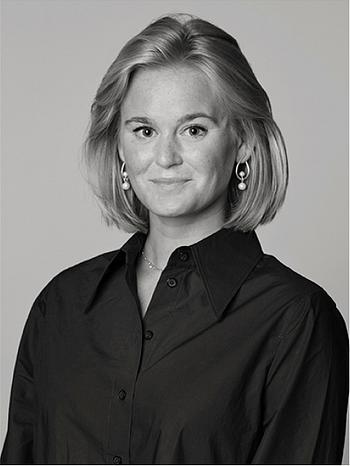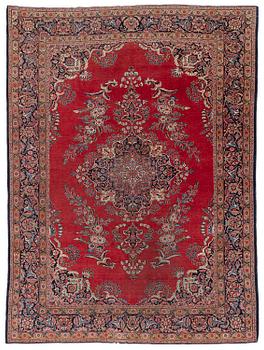Pablo Picasso
"Le Saltimbanque au Repos", from: La suite des Saltimbanques.
Etching, 1905. Total edition of 250. Published in 1913 by Vollard, Paris. Printed by Louis Fort, Paris. P. 12 x 8.7 cm. S. 51 x 33 cm (Van Gelder).
Import VAT
Import VAT (12%) will be charged on the hammer price on this lot. For further details please contact customer service +46 8-614 08 00.
Provenance
Arild Wahlstrøm, Norweigan art collector, (1909 - 1994).
Thence by descent to the present owner.
Literature
Bloch 10. Baer 12.b.2.
More information
Arild Wahlström was a Norwegian industrialist and CEO, later chairman of Sande Tresliperi A/S and Sande Paper Mill A/S. Besides business and sports, Wahlström had a great interest in art and art collecting, which he shared with his wife Aasta. In their home in Holmenkollen, the couple built an extensive collection of major Norwegian and international works. Wahlström traveled extensively and often combined his travels with visits to galleries and artists. He developed close relationships with several artists and met Poliakoff, Henry Moore, Soulanges, Manessier, Singier, and many others. He was invited three times to visit Picasso in southern France with the gallery owner Kahnweiler, but each time, business got in the way, which was a great disappointment. Wahlström's great interest in Picasso's graphics was sparked after the war, during a business trip to Paris in 1946. In a small side street, the Wahlström couple discovered a picture of a woman's head in an art gallery. "It was so beautiful - we were both taken with it immediately. It was something extraordinary." The incident led to intensive collecting and resulted in one of the world's largest private collections of Picasso graphics, with over 1,000 graphic prints. In 1982, Arild Wahlström donated nearly 500 of these prints, including the entire Vollard suite, to the National Gallery in Oslo.
Artist
Pablo Picasso (1881-1973), Spanish painter, printmaker, sculptor, and ceramist. Active in France since 1900. He is, alongside Matisse, the most dominant artist of the 20th century. After passing through a blue period, a pink period with circus scenes and harlequins, he created his first cubist painting, "Les Demoiselles d'Avignon," in 1907 under the influence of African sculptures. Together with Braque, he further developed cubism by breaking down surfaces, which were then represented in various simultaneous aspects. In 1912, he left nature and recreated a new reality, only to return to acrobats in 1916. During the 1920s, he approached surrealism and worked with whimsical forms while also producing drawings and etchings in line style. During the Spanish Civil War, he was violently stirred, and it is now that his great protest in the painting Guernica comes to fruition. In the late 1940s, he settled by the Mediterranean and produced nymphs, centaurs, and fauns, as well as paraphrases of the works of old masters, and painted powerful terracotta ceramics in Vallauris. His abundant graphic production follows the same development as his painting.
Pablo Picasso was not only an artist but also a skilled ceramist. During his lifetime, he created hundreds of ceramic works, such as jugs, vases, and plates. Picasso's passion for ceramics began when he visited the annual ceramics exhibition in Vallauris in southern France in 1946 and was introduced to the craft by the artist couple Suzanne and Georges Ramié, who owned the Madoura pottery. During the following years which he spent in Vallauris, Picasso met his second wife, Jacqueline Roque, whom he depicted on the ceramic pieces. He also decorated the ceramics with abstract animals and bullfighters in a cubist style.
Read more



